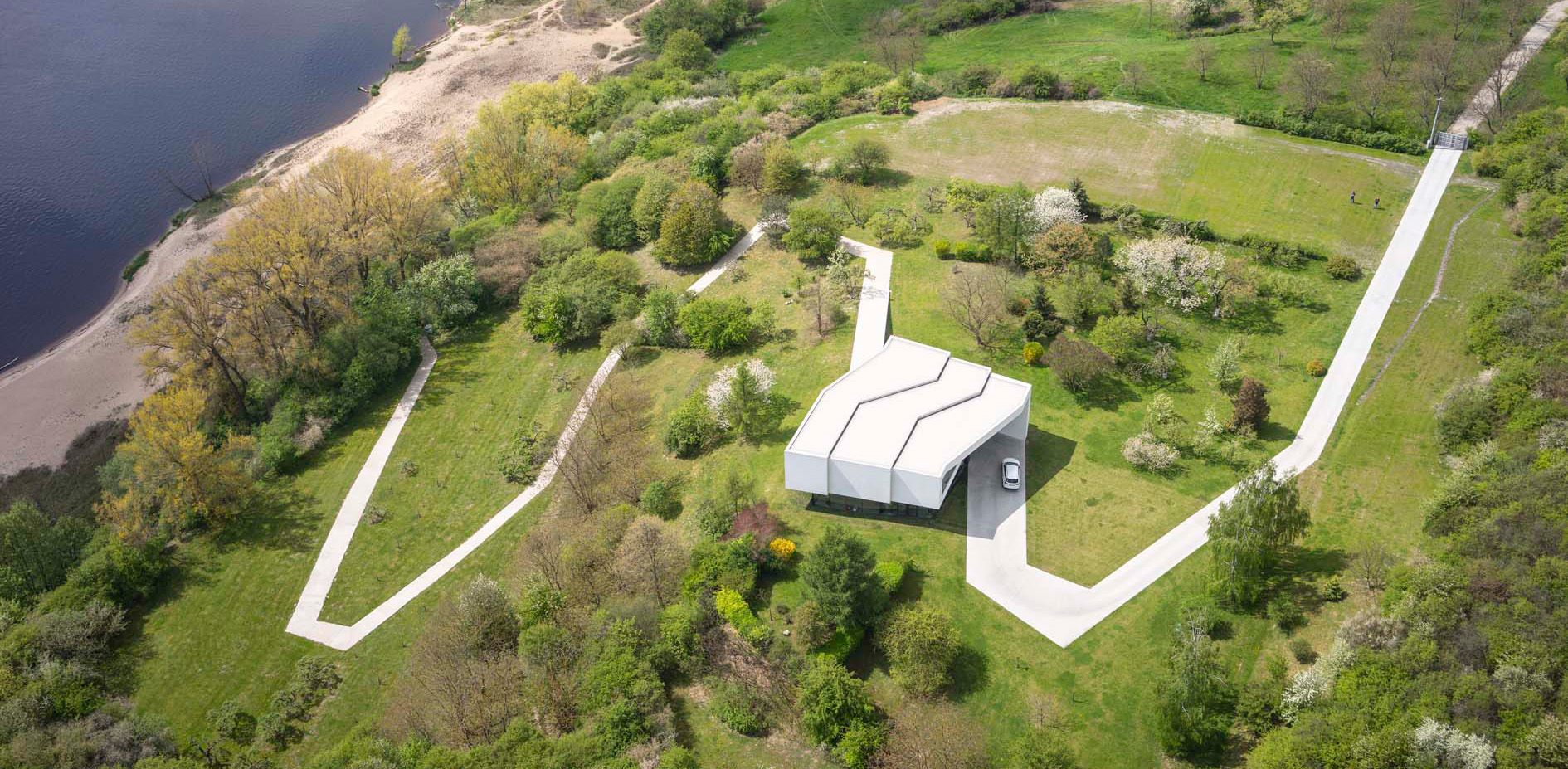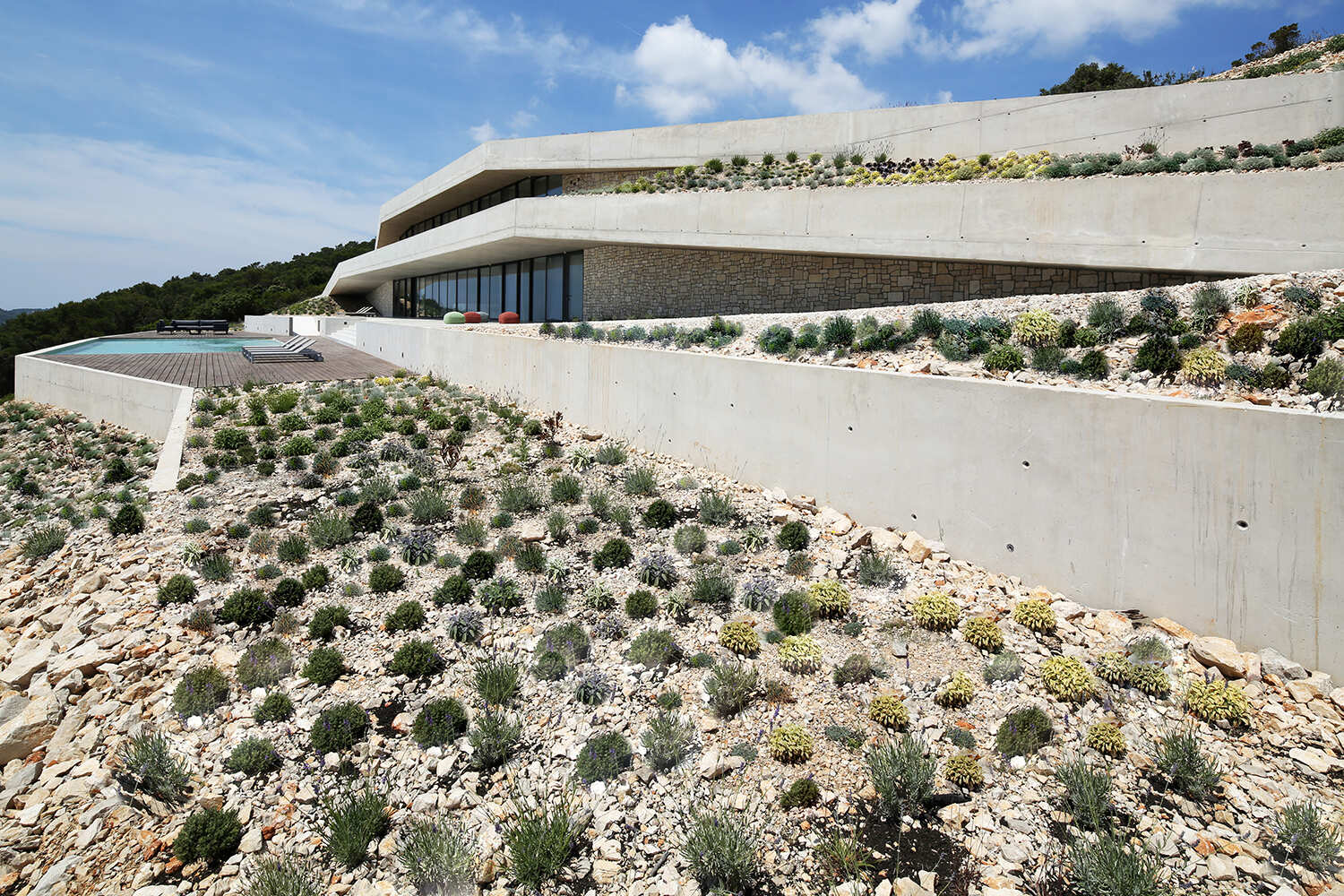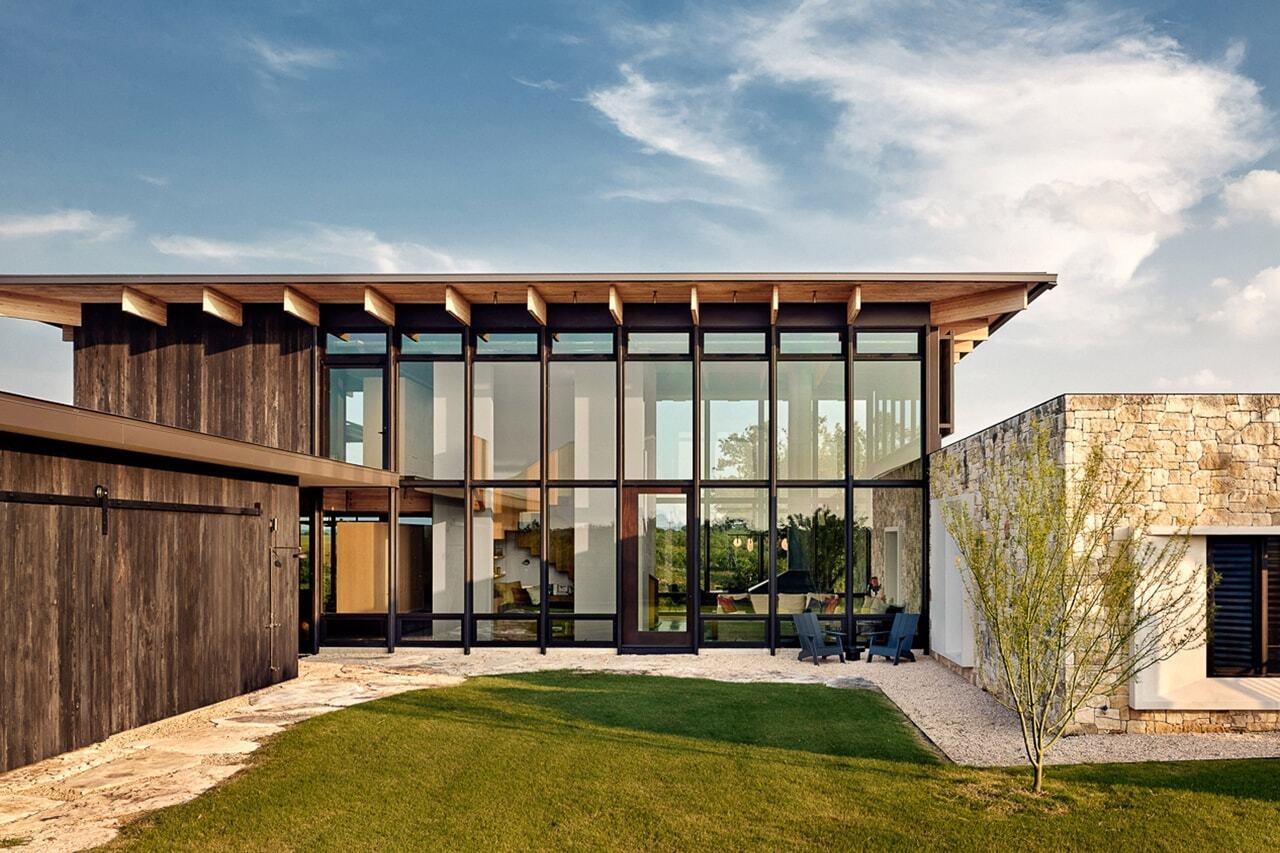Helicopter-like flying device informed by Japanese weaving among Kent State University projects


Dezeen School Shows: a flying device influenced by traditionally woven Japanese baskets is among the architecture and design projects from Kent State University.
Also included is a building featuring a floor for star-gazing and a project that examines the aerodynamic anatomy of a flying squirrel.
Kent State University
Institution: Kent State University
School: College of Architecture and Environmental Design
Courses: First Year Architecture Undergraduate Foundations/Core Studios
Tutors: Sung Ho Kim, Jean Jaminet, Beau Bock, David Thal and Kathryn Strand
School statement:
"The architecture programmes at Kent State University are committed to offering a transformational architectural education that pursues experimental and creative design thinking.
"The programmes prepare innovative architects and leaders in the community by empowering graduates with passion, skills, craft and expertise to envision the future of the built environment.
"The following projects display the first-year undergraduate foundation/core studios, covering design topics of iterative making, spatial and material complexities and comprehensive representational techniques.
"We believe in exposing our students to contemporary issues and transformational mindset with social and cultural context to create an integrated platform for scholarship, design excellence and constructive discourse within the architectural discipline."

Gliding Machine – Wind Dancer by Katie Rothgery
"Squid and form are near opposites – to create a design that mimics a squid is to create a form that can change as its conditions do.
"The model is designed to cut through air like a rocket with the wings serving to stabilise on many axes rather than glide.
"An umbrella-like mechanism creates a skeleton; the machine is designed to fold when resistance is met making it very resistant to physical impacts.
"Every piece is designed for efficiency. All parts nestle together to leave just enough room for moving parts to lay flat while looking eloquent in different forms."
Student: Katie Rothgery
Course: First Year Design Studio I Fall 2024
Tutor: Sung Ho Kim

Gliding Machine – Flying Squirrel Prototype by Eli Strauss
"The design process started with an analysis of sectional quality through exploring the aerodynamic anatomy of a flying squirrel.
"The models and drawings developed into a transformation of a flying machine that responds to the flow of the air moving through the dynamic fins.
"The final prototype embraces the detailing of the light frame and mobile joint systems that create lift in the air.
"The air foil fins activate when the prototype flows with equal frequency of the air flow, and comes to life by gliding down the zipline."
Student: Eli Strauss
Course: First Year Design Studio I Fall 2024
Tutor: Sung Ho Kim

Gliding Machine – Hummingbird Transformation by Michael Romano
"The initial design focus was capturing the physical properties of the hummingbird, later evolving into portraying concepts such as flight patterns and feather properties in a more abstract way.
"The form of this model captures the hummingbird's unique, figure-eight flight pattern through the orientation and shape of the wing structures protruding from the body of the model.
"The iridescent centrepiece within the model spins rapidly using rubber bands. It showcases the colour reflecting properties of hummingbirds' feathers and their rapid heartbeat, allowing the bird to be beautifully acrobatic.
"Using ideas such as shape, form and functionality, the model captures the uniqueness of the hummingbird in a boldly abstract way while retaining its connection to this incredible animal."
Student: Michael Romano
Course: First Year Design Studio I Fall 2024
Tutor: Sung Ho Kim

Gliding Machine – A Woven Speculation of Flight by Katherine Lennox
"The original object of flight I decided to research and base my project on was the helicopter.
"Initially, I chose to study the pieces of the aircraft vital for flight: the rotor blades. I began the process by adding geometry, abstracting the helicopter's general shape and adding additional layering to the blades for my midterm.
"To include a further display of motion, I added a central brass pole for segmented body abstractions to rest upon and experimented with the wings.
"I studied Japanese basket weaving forms, specifically Hayashi Junpei's work, to create a more unified look.
"I experimented with different forms of weaving to create an overall basket shape, then created asymmetrical wings attached to the basket that involved further layering and a mix of line and plane.
"I also decided to incorporate a three-stick stripe along the basket to create a standing point to watch as the basket turns and twists in a cinematic way."
Student: Katherine Lennox
Course: First Year Design Studio I Fall 2024
Tutor: Beau Bock

Gliding Machine – 'Primitive' Tension by Asher Collens
"In project one, I studied the atlatl, a spear-throwing device, focusing on the concept of tension. As the dart is thrown, it builds up elastic potential energy unevenly in its spine, giving the dart up to 15 per cent more energy.
"The tension and strain on the dart tell the story of this object's motion for my modules and diagrams for the project.
"Tension continued to be a significant aspect of my second project, which had a structure of uneven bentwood forms kept bent with taught cords that hold the loose dowel joints together.
"I also began to celebrate the primitive aspects of my object, purposely avoiding using butt joints that are glued together and instead celebrating the connections using dowel joints and contrasting lashings.
"These joints are also far stronger and more impact-resistant than glue."
Student: Asher Collens
Course: First Year Design Studio I Fall 2024
Tutor: David Thal

Material Organisation by First Year Design Studio II | Spring 2024
"First year undergraduate spring design studio questions the reality that most architecture is not resolved within the logic of a single model, a single surface or a single material.
"Architecture operates with assemblies involving multiple models, surfaces and materials. Architecture is not one continuous, monolithic object but is composed of multiple parts and organisational models operating at various scales.
"Contemporary architecture in its various forms (modern, postmodern, deconstruction, folding and blobism) has dealt with these issues, but the rationalised system of construction it employs typically resolves itself as a whole, which is not greater than the sum of its parts.
"In material organisation, performative aspects of material phenomena and properties are to be investigated through various assembly techniques to balance material geometry and force."
Students: First Year Design Studio II | Spring 2024
Course: First Year Design Studio II Spring 2024
Tutor: Sung Ho Kim

Observatory – Weathering the Causeway by Elizabeth Windham
"The observatory for natural forces is based around the site of Giants Causeway in Ireland and its unique rock formations. With its location being on the edge of the ocean, the observatory is focused primarily on the constantly shifting high winds.
"The defining feature of the building is the two large protruding structures that rotate positions to alter the flow of the wind while also influencing how people experience the space and surrounding site.
"Through numerous studies of tectonics and delaminated surfaces, the outer shell of the observatory became the element that interacts with the wind.
"On either side of the mobile structures are fixed units with which the mobile units lock into place. The shifting of structures changes the view and experience of occupants as they travel through the observatory.
"Between the moving units and the small plane-like flaps, the observatory is not only on the site but a part of it, influencing the natural flow of wind."
Student: Elizabeth Windham
Course: First Year Design Studio II Spring 2025
Tutor: Sung Ho Kim

Observatory – Shards-Ski Lift Observatory by Jacob Newcomer
"My final observatory project explores the effect of condensation on glass and how it influences the perspective of the viewer.
"By using progressive layering and lamination techniques with sanded clear acrylic panels, a gradient effect is achieved, altering the viewer's perception as they move through space.
"By using layering and gradient transitions, the observatory offers a dynamic viewing experience, constantly altering perceptions based on the observer's movement and focus.
"I began my design process by photographing a preconstructed model and editing the images in Photoshop. I then blended these edited images with a series of images generated using mid-journey, using the different tools it offers to achieve the desired effect.
"The blended images served as inspiration for the next design iteration, continuously refining the concept. The relationship between the observatory and its site is portrayed through two main aspects: slope alignment and gradient transition.
"The slope of the building mimics the slope of the site, enhancing the spatial flow within both the observatory and the surrounding areas.
"Additionally, snow acts as a transition layer from the site to the observatory, reinforcing the gradient effect seen within the observatory and promoting a seamless connection between the site and the structure.
"The final design incorporates these elements to create a space where condensation on glass and the resulting perspective shifts are central themes."
Student: Jacob Newcomer
Course: First Year Design Studio II Spring 2024
Tutor: Kathryn Strand

Observatory – Magmatic Sprawl by Lily Weber
"An observatory for natural forces of Giant's Causeway was looking to inhabit the site in a way that allowed for examination and viewing of the researched phenomena.
"This observatory was developed to spread across a significant portion of the landscape to allow visitors to see how the unique rock formations have held up at different elevations and places where it would meet the sea.
"Beginning the creation process with heavy emphasis on modularity made for a final model that has ten connected platforms.
"Four of which are covered by an enveloping wall of connected and delaminated triangles. Three of the platforms have a rotating component that allows for further expansion on what can be observed.
"The composition of the platforms mimics the spread of lava across a landscape, which calls back to the formation of the site itself, a key component of what would be studied."
Student: Lily Weber
Course: First Year Design Studio II Spring 2025
Tutor: Sung Ho Kim

Gliding Machine – A Woven Speculation of Flight by Katherine Lennox
"The original object of flight I decided to research and base my project on was the helicopter.
"Initially, I chose to study the pieces of the aircraft vital for flight: the rotor blades. I began the process by adding geometry, abstracting the helicopter's general shape and adding additional layering to the blades for my midterm.
"To include a further display of motion, I added a central brass pole for segmented body abstractions to rest upon and experimented with the wings.
"I studied Japanese basket weaving forms, specifically Hayashi Junpei's work, to create a more unified look.
"I experimented with different forms of weaving to create an overall basket shape, then created asymmetrical wings attached to the basket that involved further layering and a mix of line and plane.
"I also decided to incorporate a three-stick stripe along the basket to create a standing point to watch as the basket turns and twists in a cinematic way."
Student: Katherine Lennox
Course: First Year Design Studio I Fall 2024
Tutor: Beau Bock

Observatory – Celestial Ascension by Carmela Buffone
"The observatory for natural forces: Celestial Ascension has dynamic qualities centred around the study of astronomy.
"The project began with a system of triangular, delaminated units connected almost randomly and asymmetrically.
"That system evolved into a structure with occupiable space. The four cone structures with balconies and stairs connecting them provide a flow throughout the space to explore the site and stars.
"Giant's Causeway influenced the design immensely through the vertical flow of the building and the bottom supports that branch out.
"The verticality of each cone stretches towards the stars and gives both the researchers and visitors an engaging experience.
"As people utilise the space inside, the walls can open up, revealing the expansive sky above. The unique steps on the inner face of the wall allow occupants to climb to the highest level and immerse themselves in the stars."
Student: Carmela Buffone
Course: First Year Design Studio II Spring 2025
Tutor: Sung Ho Kim
Partnership content
This school show is a partnership between Dezeen and Kent State University. Find out more about Dezeen partnership content here.
The post Helicopter-like flying device informed by Japanese weaving among Kent State University projects appeared first on Dezeen.


















































